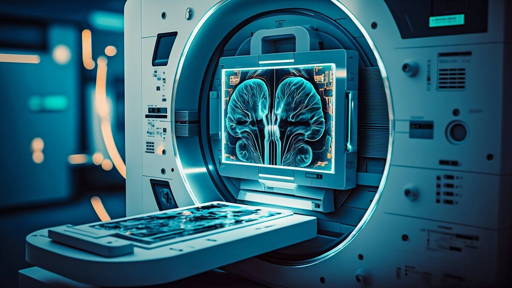How is digital health helping Finnish healthcare to be more efficient, patient-oriented and sustainable?
For centuries Finland has been collecting data precisely. And we also have been working for a long time to have our health and social care data digitized and harmonized. This is now paying off for the Finnish Health Care System and Finnish citizens. Our vision is that through a better use of data we will be able to ease the workload of health care professionals, empower patients and create a more sustainable healthcare system.
Could you please describe the digital health services already available for patients in Finland?
We have the National Data Exchange Layer which is the equivalent of the Estonian X-road. The amazing thing about this is that data can be exchanged, even between these two countries.
We also have Kanta/My Kanta for Health data. These services are widely used by patients, even though they are fairly new. The system grants access to all healthcare information that the public system has about the person making the enquiry. People can renew electronic prescriptions, view records related to their treatment, store their living wills and organ donation testament and consent to or refuse the disclosure of their personal data.
How are patients benefiting from these digital health services? What has changed since they have been adopted?
Making all of their healthcare information available to patients, has in fact, empowered them. There have been complaints and appeals about the way their episodes have been recorded by the healthcare professionals. Also, this system saves patients a lot of time and effort because they do not need to visit the doctor personally to get a new prescription. People are more aware of their health status which can be motivational and have an impact on their lifestyle choices. There has been an increase in the number of companies providing wellness, nutrition and healthcare services in Finland.
Making all their healthcare information available to patients, has in fact, empowered them.What factors have accelerated the digitalization of Finnish healthcare? The concurrent need for widespread health– and social care reform is changing the dynamics of the public healthcare system by opening it up to private sector activities. The funding structure is also changing. In the future, money will follow the patients through the system. Another very helpful factor was also the cultural context which is very tech-savvy and prone to adapt to new concepts and technologies. Remarkably we have simultaneously taken a top-down and bottom up approach to these changes. How have health policy and administrative initiatives been supportive in this process? The support from the administrative sector has been vital to the process. Finnish people are very law abiding and it was necessary to give them a legislative framework first. There is a common understanding that these changes have to take place as soon as possible. Although our system is compatible in the international cost rankings, our government has still set up ambitious cost cutting goals which they hope to achieve with digitalization and implementing new technologies and AI. What is the biggest topic in the digitalization of healthcare in your country right now? My Data, an initiative to help people gain more control over their personal data. We realize that soon most of the healthcare information will come from outside the healthcare system. People are producing health and wellness related data in a way we have never before seen. The question then is: How can this data be used to benefit patients? How much of it will be relevant to the healthcare professionals? And what are the mechanisms for sharing it? And does it have monetary value to me? Which stages of digitalization were the most difficult ones? How have the barriers been broken? Politics has caused almost unbearable delays. Health– and social care reform have been in the making before – unsuccessfully. It is currently being debated in the Finnish Parliament in the hope of new legislation being passed soon. This time however, the health and social care actors are well prepared to begin to fully implement the law, once it is passed. To give you an example, one of the laws being debated by the Parliament is the Law of the Secondary Use of Patient Data. This law would enable a new authority to be formed – The Digital Data Hub. It is a one-stop-shop for Finnish healthcare data for scientists and developers alike to start making the most of it. It is all set to run once the law is passed. Also, when the very progressive Biobank Law was passed a few years back, it inspired an active societal dialogue about ethics. This discourse is again acute, since the new Genome Law will be taken to Parliament this year. Finns trust these laws to frame the context for future actions. Kanta - National Archive of Health Information Finland's largest national digital healthcare project is the Kanta Service, i.e. the National Archive of Health Information. Kanta is one of the most comprehensive systems of its kind globally, covering already the entire Finnish public healthcare sector as well as most of the private sector. The development of Kanta began around 2005, and the first laws concerning the digital service were enacted in 2007. The Kanta Service includes a Patient Data Repository, electronic prescriptions and My Kanta pages. My Kanta, a citizen’s personal health page and interface to the Patient Data Repository. It allows citizens to examine their health records via Internet and give chosen healthcare professionals access to their information. The service ensures that patient records are kept safe and follow the patient in electronic form, regardless of which healthcare provider they visit. Citizens can request the renewal of digital prescriptions online, which has decreased visits to healthcare services. Some healthcare organizations have ceased mailing medical case summaries to patients because summaries are available in My Kanta. The service has also made paper archiving unnecessary. Kanta’s most recent feature allows citizens to enter their own data – e.g. data from a mobile application that they use – on their My Kanta page and choose which healthcare professionals can access this information. In the future, Kanta will also include social services data. New user services will continue to be developed for both citizens and professionals. The Kanta Service is a collaborative undertaking among the Social Insurance Institution of Finland (Kela), the National Institute for Health and Welfare (THL), the Ministry of Social Affairs and Health, and various social and healthcare organizations. Source: finlandhealth.fi








